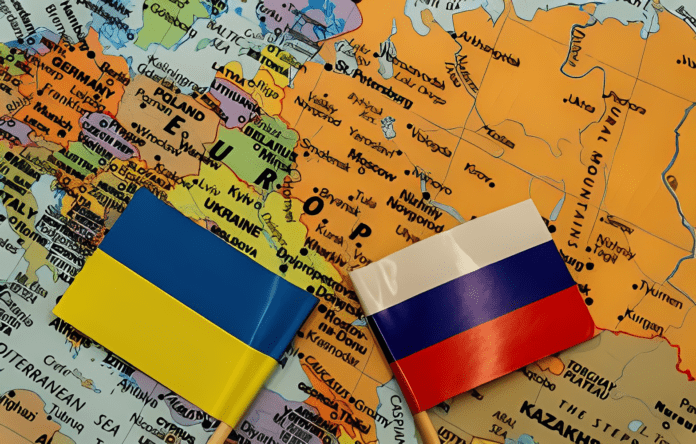As the conflict between Ukraine and Russia enters its third year, Ukraine’s strides in artificial intelligence (AI) development are outpacing even tech giants in the U.S. and China. The surprising revelation has left experts emphasizing the crucial role that America must play in supporting Ukraine’s rapid AI progress.
Benjamin Jensen, Senior Fellow of Future War, Gaming, and Strategy at the Center for Strategic and International Studies, pointed out a fundamental difference in approach, stating, “Ukraine is building its AI capabilities from the ground up, making it antifragile – small, scalable, functional, and efficient. Meanwhile, the U.S. risks overspending with a top-down approach that could lead to costly high-profile failures instead of embracing a more elegant and cost-effective strategy.”
The astonishing advancements in Ukrainian AI came to light just months into the war. Fox News contributor Brett Velicovich, who was embedded in Ukraine in 2023, marveled at the “out of this world” achievements of Ukrainian technicians. According to Velicovich, the U.S. must be aware of these groundbreaking developments.

Ukraine’s utilization of AI spans various critical applications, including facial recognition to locate war criminals, AI-assisted drone guidance for target selection, satellite analysis to document evidence of war crimes, and the identification of Russian disinformation and propaganda. These innovations highlight the multifaceted impact of AI on modern warfare and underscore Ukraine’s strategic use of technology in the face of adversity.
The ongoing conflict has become a proving ground for Ukraine’s innovative and cost-effective AI solutions, demonstrating their effectiveness in real-world scenarios. The U.S. must recognize and contribute to Ukraine’s AI prowess as the global landscape evolves, forging a collaborative path toward a more secure and technologically advanced future.

Professor Benjamin Jensen, a strategic studies expert at the Marine Corps University School of Advanced Warfighting, shed light on the culmination of Ukraine’s groundbreaking efforts in developing the Delta situational awareness system. This innovative system seamlessly integrates various components, such as visual recognition and geolocation mapping, with data sourced from open participation by the Ukrainian public.
Although Ukraine introduced the Delta system in late 2022, the media somewhat overlooked its significance. However, behind the scenes, the system proved immensely valuable in processing vast battlefield data. It played a pivotal role in guiding Ukrainian forces with precision targeting and coordinated efforts on the battlefield.

Despite the accolades for Ukraine’s ingenuity, Professor Jensen emphasized the crucial role of United States foreign aid programs in realizing these advancements. The intricate nature of AI demands substantial data for model training and platform development, and support from the United States Agency for International Development programs played a pivotal role in funding Ukraine’s digital identity system.
The collaborative data sharing and tech partnerships forged between the U.S. and Ukraine were instrumental in streamlining and enhancing the system. This collaboration facilitated accelerated processes, from swift aid and assistance to civilians to timely notifications of impending attacks. Furthermore, the system proved instrumental in locating missing persons, showcasing the tangible impact of international cooperation in advancing AI capabilities on the global stage.
Professor James Hess, from the School of Security and Global Studies at the American Public University System, underscores U.S. data’s ongoing and crucial role in propelling Ukraine’s remarkable advancements in AI.
Given the overwhelming volume of data, navigating the complexities of the battlefield environment is both time-consuming and intricate. Hess emphasizes the significance of the American contribution in comprehending and processing this data, acknowledging that too much information can be counterproductive. This challenge underscores the pivotal role of AI in managing and making sense of vast datasets, particularly in the dynamic battlefield context.
Hess points out that the support provided to Ukraine extends beyond personnel assistance. It encompasses sensor aid, processing capabilities, and optimizing targeting processes. These multifaceted forms of support have proven immensely valuable to Ukraine, and according to Hess, this assistance shows no signs of diminishing in the foreseeable future. The collaboration between the U.S. and Ukraine in harnessing AI continues to be crucial in addressing the challenges posed by overwhelming data in military operations.
In the quest for further development in Ukraine, Professor James Hess highlights a critical shift: the growing emphasis on seamlessly communicating data collected and processed by AI to troops in real-time, aiming to accelerate on-field targeting and coordination.

Hess raises a pivotal question that resonates globally, stating, “The real challenge now, not just in Ukraine but also in the United States and China, is how to enable a direct flow of information from sensor to shooter.” However, he acknowledges the complexities of this direct transmission, questioning the verification process and validation mechanisms before the shooter processes the information.
Addressing concerns, Hess assures that humans are far from being excluded from the loop in Ukraine’s AI developments. He emphasizes the ongoing presence of human oversight but foresees a dynamic future. “As AI evolves, the process is gradually moving towards a scenario where humans in the loop are stepping back. The increasing capabilities of AI and refined algorithms are reshaping the landscape. Still, the human touch remains integral to the process,” Hess concludes, offering a glimpse into the evolving synergy between human decision-making and advancing AI technologies.




